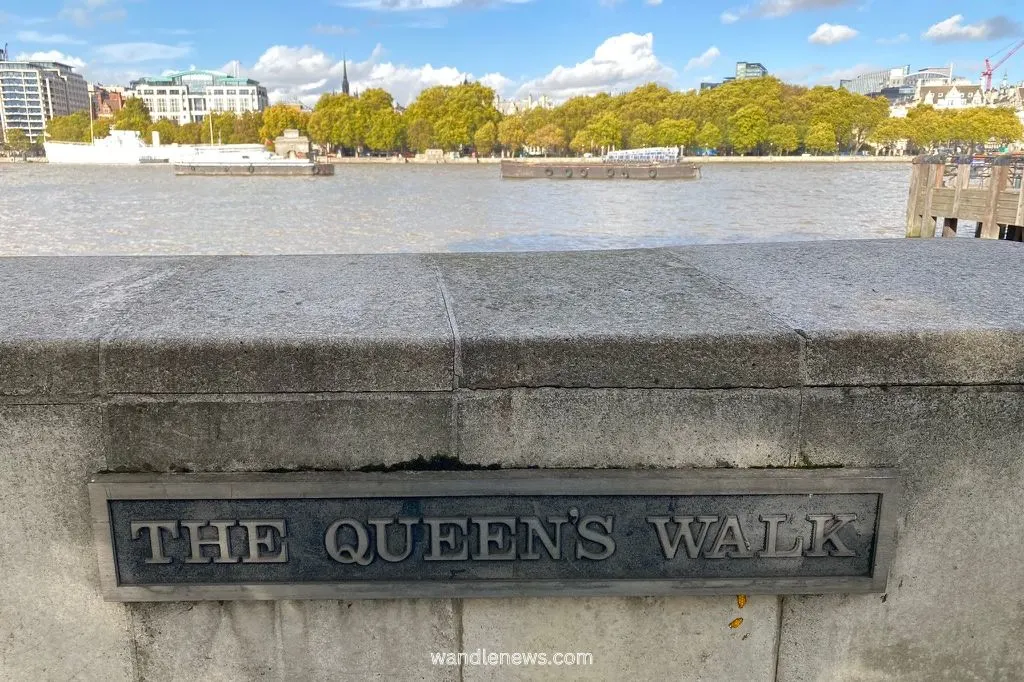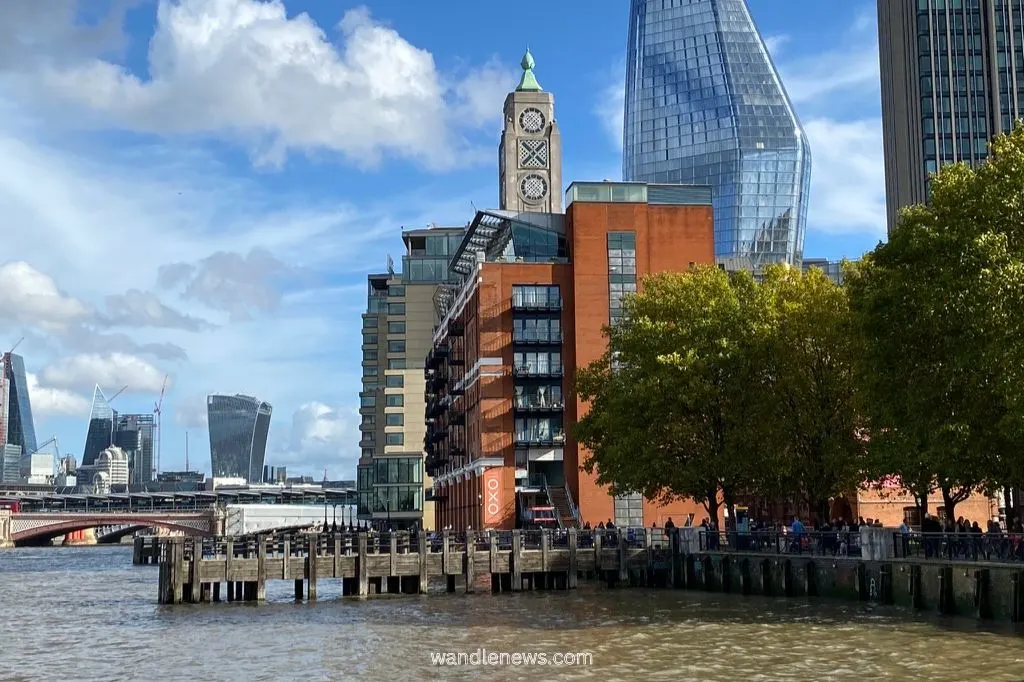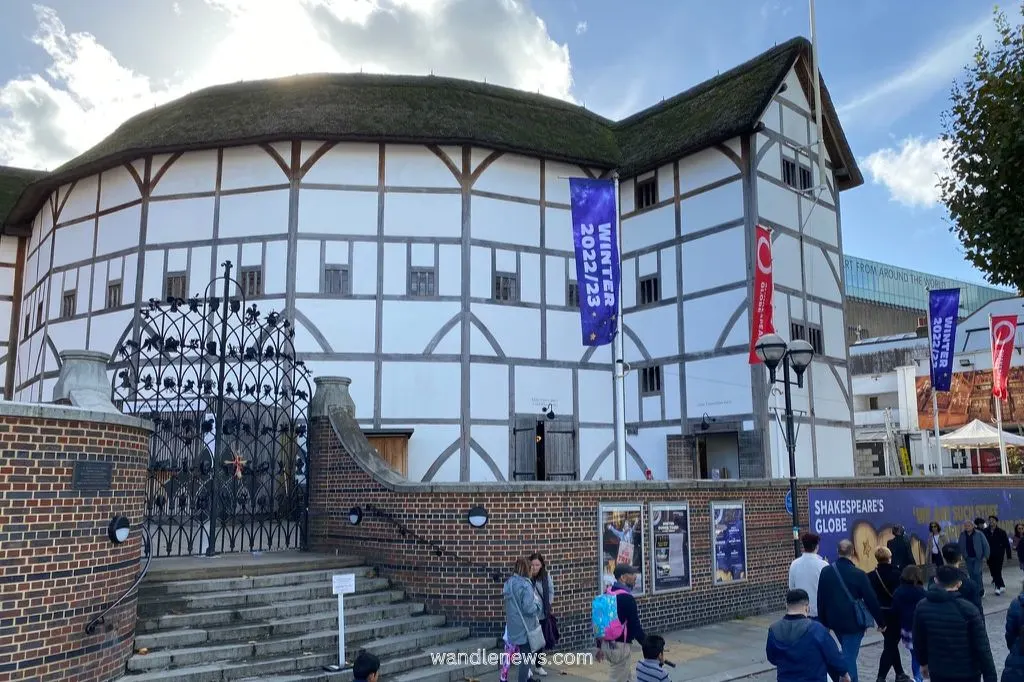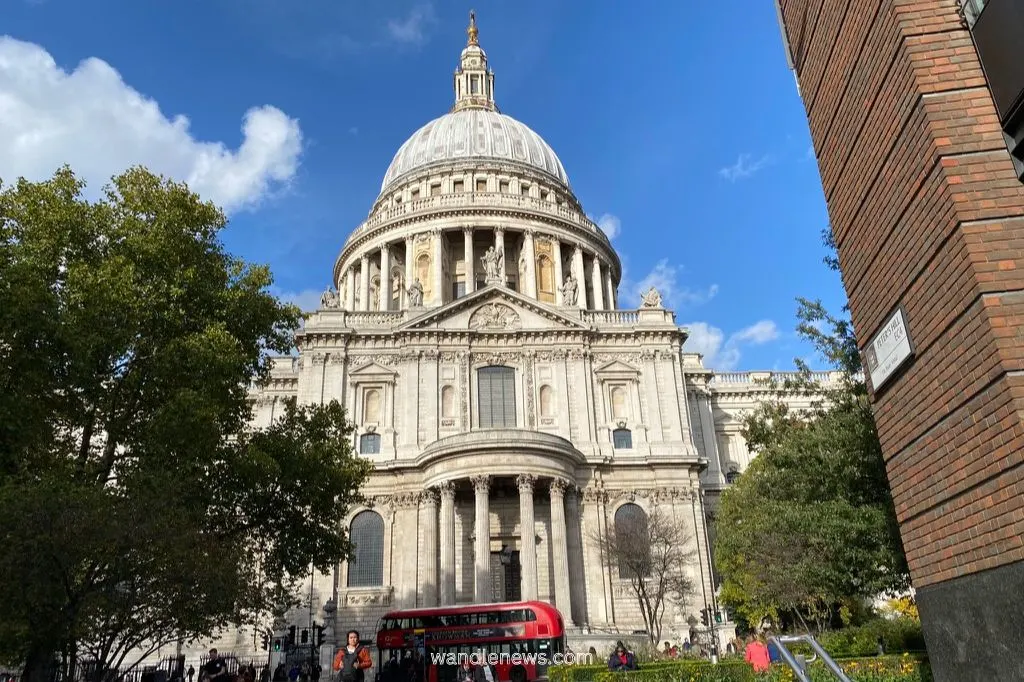The Queen’s Walk in London takes you along the Southbank, from Westminster Bridge to Blackfriars Bridge. Once you pass Blackfriars, you could either follow the walk to St Paul’s Cathedral via the Millennium footbridge, or keep walking along the south bank of the river towards Tower Bridge.
This post follows the route to St Paul’s Cathedral. It contains a map of The Queen’s Walk, as well as information about the points of interest you will pass.

This is a good walk for London landmarks, theatres and restaurants. It is not, however, a good choice if you want to see river wildlife, plants, or have a tranquil stroll along the river path.
The Queen’s Walk is one of the busiest river walks in London. The route is crowded for the full length of the path, and at most times of the day.
On the positive side however, you get great views of the Houses of Parliament, Big Ben and St Pauls Cathedral. The route also passes a wide range of coffee shops, restaurants and bars, as well as tourist attractions such as the London Dungeon and the London Eye.
Map of The Queen’s Walk in London
| Distance: | 1.74 miles / 2.8 km |
|---|---|
| Start: | Westminster Bridge |
| Finish: | St Pauls Cathedral |
Points of Interest on The Queen’s Walk in London
Westminster Bridge
The walk starts at Westminster Bridge.
Westminster Bridge leads to the Palace of Westminster, which is informally known as the Houses of Parliament. This is the meeting place for both the House of Commons and House of Lords.
The bridge was opened in 1862, and is the oldest surviving road bridge over the River Thames in central London.
The National COVID Memorial Wall can be found next to the bridge opposite the Houses of Parliament.

Houses of Parliament
The south side of the river gives you the best views of the Palace of Westminster, Elizabeth Tower, and Big Ben. It is a grade I listed building and part of an UNESCO World Heritage Site.

London Eye
After passing under Westminster Bridge, you will walk past the London Dungeon and the County Hall Building, before reaching the London Eye.
The London Eye was once the world’s tallest ferris wheel, between 2000–2006. Today it is the sixth tallest at 135m (443 feet). The London Eye is situated next to Jubilee Gardens, which is a landscaped park on the Southbank.

Golden Jubilee Bridges
The Queen’s Golden Jubilee Footbridges run either side of Hungerford Bridge. The bridges won the Royal Fine Art Commission’s Building of the Year Award in 2003.
The Golden Jubilee bridges are the busiest in London, with an estimated 8.5 million people a year crossing them each year.

Southbank Centre
The Southbank Centre is the largest arts centre in the United Kingdom. Within the Southbank Centre you will find the Royal Festival Hall, Queen Elizabeth Hall, the Purcell Rooms, the Hayward Gallery, the National Poetry library, and the Southbank Centre Archive Studio.

National Theatre
Alongside the Royal Shakespeare Company and the Royal Opera House, the National Theatre is one of the country’s biggest publicly funded performing arts venues.

Waterloo Bridge
Waterloo Bridge originally opened in 1817. It was due to be called Strand Bridge, but the name was changed to commemorate the victory of the Battle of Waterloo in 1815.
Waterloo Bridge is the site where, in 1868, an Iron Age helmet, dating from around 150-50 BC, was found. It’s the only Iron Age horned helmet to be found in the whole of Europe. Today, the helmet is located in the British Museum.
The new Waterloo Bridge was constructed during the second world war. It’s known as “The Ladies Bridge” since it was mostly built by women.

Oxo Tower
The Oxo Tower was built at the end of the 19th century. It was originally a power station to supply electricity to the Royal Mail offices. In the 1920s it was acquired by the Liebig Extract of Meat Company, who were the manufacturers of the Oxo beef stock cube.
The company wanted to build a tower which had an illuminated sign advertising their product, but planning permission was refused, since skyline advertising was banned on the Southbank, at the time. As a result, the company built four sets of windows instead, which were in the shape of two circles and a cross.

Blackfriars Bridge
The area of Blackfriars gets its name from the Dominican monks who were based here from 1276-1538. If you look closely at Blackfriars Bridge, you will see pulpit-shaped pillars along the bridge. These are thought to have been built as a reminder of the Dominican monastery that gave Blackfriars its name.
The first Blackfriars Bridge was opened in 1769, and was the third bridge to be built in central London after Westminster Bridge and London Bridge. The second Blackfriars Bridge was opened in 1869 by Queen Victoria.
Blackfriars Bridge is also the place where the River Fleet, the most notorious of London’s lost rivers, meets with the River Thames.

Tate Modern
The Tate Modern is in the building of the former Bankside Power Station, which was built between 1947-63. Today, it is a gallery for modern and contemporary art in London.
The Tate Modern is opposite to the Millennium Footbridge, where you can cross the Thames to reach St Paul’s Cathedral.

Shakespeare Globe
Shakespeare’s Globe Theatre is a 360° open air theatre. It is the only building in London with a thatched roof. Special permission had to be obtained for the thatched roof, since there has been a law prohibiting thatched buildings in London since the Great Fire of 1666.
The Globe Theatre was first built in 1599 by the company that William Shakespeare wrote for and part-owned, the Lord Chamberlain’s Men. This theatre burnt down in 1613 and was rebuilt. It was then closed down by parliamentary decree in 1642.
The current theatre has been open since 1997.

Millennium Footbridge
The Millennium Bridge is a pedestrian suspension bridge. It links the south bank of the River Thames with the City of London.
The bridge opened in June 2000, and was initially nicknamed the “Wobbly Bridge” as it started swaying on the day it opened. It was then closed for two years so the bridge could be stabilised to stop the swaying motion.

St Paul’s Cathedral
The walk ends at St Paul’s Cathedral. The photograph below shows the view you get of the cathedral once you cross the Millennium Footbridge.
St Paul’s Cathedral is the seat of the Bishop of London, and was built on the highest point in the city of London. The original church on this site was built in 604 AD. The current building dates from the 17th century and was designed by Sir Christopher Wren, after the former cathedral was destroyed by the Great Fire of London.

How to Get to the Start of The Queen’s Walk in London
Either Waterloo tube station or Westminster Station are the closest stations to the start of the walk.
FAQs About The Queen’s Walk in London
How long is the Queen's Walk in London?
The Queen’s Walk from Westminster Bridge to St Pauls Cathedral is 1.74 miles long (2.8 km). If you want to continue the walk to Tower Bridge, the full route is 2.17 miles (3.5 km).
Are there public toilets on this walk?
Yes, there are public toilets in St Thomas’ Hospital which is next to Westminster Bridge, at the start of the walk.
Where does the Queen's walk start?
The Queen’s walk starts at Westminster Bridge. The closest tube stations are either Westminster or Waterloo.
How long does it take to walk across the Tower Bridge in London?
It only takes about five minutes to walk across Tower Bridge. It will take you to the Tower of London where you can see the Crown Jewels.
Can I walk from London Bridge to Tower Bridge?
Yes, you can walk along the river from London Bridge to Tower Bridge. This is part of the Queen’s Walk, and goes past HMS Belfast which is a historic warship and museum on the river Thames.
Other London River Walks
This Post was About The Queen’s Walk London
Thank you for reading my post about the Queen’s Walk in London. If you have taken this walk, please leave me a comment below and let me know what you thoughts.
If you were to continue walking along the southern bank of the river Thames, instead of crossing the Millennium Bridge, you would soon get to Borough Market, Southwark Cathedral and Tower Bridge.
